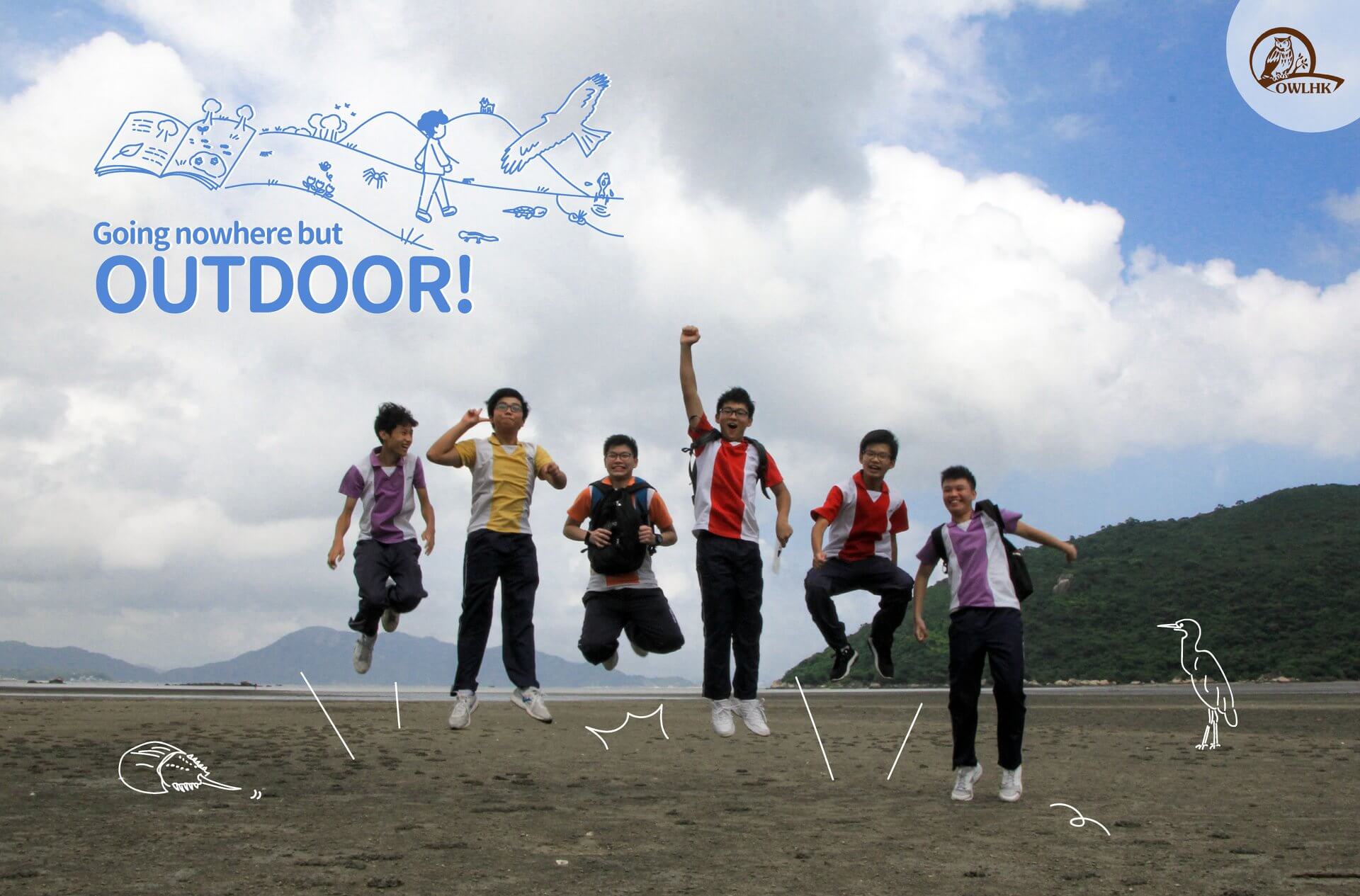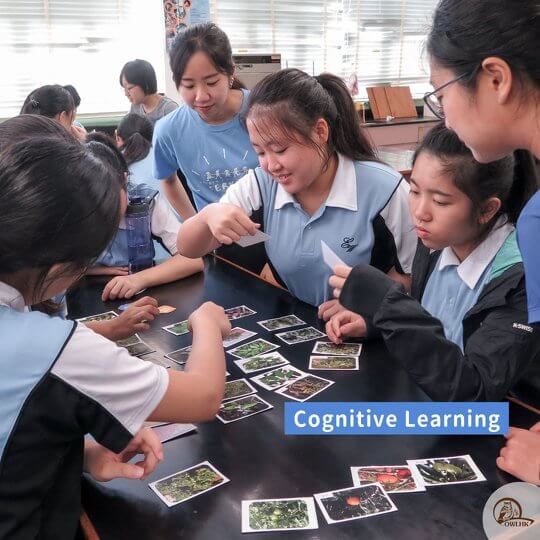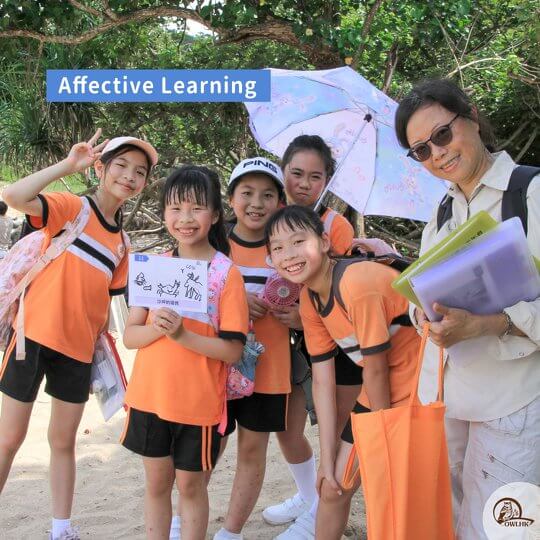Outdoor Education
Outdoor education takes experiential learning as the core and is learner-oriented which emphasizes personal experience and participation during the learning process. After experiencing and participating, reflection by the learner is encouraged and aroused, including reflection about oneself, others, the society, natural environment and even the world. This facilitates the construction of a new perception and meaning of an individual, both internally and externally (Kolb, 1984). This process highlights learner’s affective learning to create a profound learning experience.
Outdoor education also represents the ‘education in the environment’ approach in environmental education. It can be seen that outdoor education is an indispensable part of environmental education.
Ecological Education
Ecological education refers to learning about nature, especially ecology and biodiversity. According to the Model of Responsible Environmental Behaviour (Hungerford & Volk, 1990), ecological knowledge is an important factor in entry-level and ownership variables. Together with empowerment variable, they are crucial in establishing responsible environmental behaviour.
Thus, a proper understanding of nature and the environment is an important foundation for establishing appropriate environmental behaviour. Ecological education is mainly carried out through outdoor education, such as educational activities in different habitats including forests, rivers and streams, rocky shores, mangroves, so as to observe and get in touch with various ecosystems. This is the best way to understand and learn about the wonderful nature.
Therefore, outdoor education and ecological education are the core of environmental education. Under the Threefold Approach of environmental education, outdoor education has not yet been popularized in Hong Kong. In light of this, our organization is named ‘Outdoor Wildlife Learning Hong Kong’ and is committed to pushing environmental education forward in Hong Kong.
How Different is Outdoors?
Even so, placing oneself outdoor does not assure effective learning (Lai, 1996). Based on research, I have proposed the ‘Effective Field-based Environmental Education Model’ to design and hold outdoor environmental education activities to achieve the best outcome (Ma, 2016). All OWLHK activities adopt this model as basis along with different teaching methods. Activities are carefully designed for different audiences.
Other than on-site learning in the environment, the focus of outdoor education is to establish relationship and love with nature. Therefore, both affective and cognitive learning should be equally emphasized and implemented and that is the key to effective outdoor education.
For an example, I have led students to learn forest ecology in Tai Po Kau Nature Reserve under the ‘Hong Kong Forest Conservation Ambassador Scheme’ by OWLHK. In the half-day field trip, we encouraged students to take the initiative in exploring and observing nature through various games and activities. Together with tutor’s interpretation, students were able to acquire basic understanding of forest ecology. When I asked if the students have ever been situated in a forest, interestingly, none of them have. So, I brought them to make a detour into the forest to seat there in silence for ten minutes. When activity ended that day, that ten minutes of silence was the most memorable experience to them. In fact, it takes time and space to connect with nature. The activities cannot be too tight or too loose. Having the level balanced, this is the spirit of outdoor environment education.
In another activity by OWLHK ‘Granny’s Secret’, we brought students to visit the Lantau Island. On our way walking out to the sandy shore, there was a heavy downpour. While there was no thunderstorm and the tide is low, which is possible for our activity to continue in the safety perspective, it was still school teachers’ decision to continue or not. When the teacher asked her students whether to continue after I asked her, students’ answer was an unanimous “YES!”
So we turned out going on to the sandy shore. Students were very excited despite of the heavy rain. More importantly, they were really attentive to the tutors’ interpretation with their clothes all wet. I believe that, what was left from this experience of feeling nature would definitely be one they will never forget. All these adventures should be the experience that an outdoor environmental educator brings along for the learners. As the saying goes ‘love is mutual’. Only when you have ever got the feeling of being touched by nature, you will know how to love nature.
Prospect of Outdoor Environmental Education
There are numerous benefits of outdoor environmental education (Ardoin, et al., 2017, Dillon & Dickie, 2012, Rickinson et al., 2004). For instance, as ‘nature-deficiency disorders’ is not rare among youngsters (Louv, 2008), getting exposed to nature could aim both physical and mental health. This is undoubtedly beneficial to the whole society. However, there is still considerable room for outdoor environmental education to improve, in terms of both quality and quantity.
Hong Kong has high biodiversity and beautiful natural environment. Yet, it is still an unanswered question worth thinking to come up with a method to implement outdoor education in a lively, learner-oriented, highly efficient way, not forgetting to mainstream outdoor education.
As a professional environmental education organization, OWLHK has been working hard and every outdoor environmental education activity was designed and implemented with whole heart. Yet, from the perspective of the entire society, concerted effort is needed from different stakeholders to bring about changes to the industry of outdoor environmental education.
I sincerely hope that everyone will work together in the future to improve outdoor environmental education in Hong Kong!
References:
- Ardoin, N. M., Bowers, A. W., Roth, N. W. & Holthuis, N. (2017) Environmental education and K-12 student outcomes: A review and analysis of research. The Journal of Environmental Education, 49(1), 1-17.
- Dillon, J., & Dickie, I. (2012). Learning in the Natural Environment: Review of social and economic benefits and barriers (Vol. 092): Natural England Commissioned Reports.
- Hungerford, H. R., & Volk, T. L. (1990). Changing learner behavior through environmental education. The journal of environmental education, 21(3), 8-21.
- Kolb, D. A. (1984). Experiential Learning: experience as the source of learning and development. New Jersey: Prentice-Hall.
- Lai, K. C. (1996). Revisiting Fieldwork: Difference between Intention and Practice. Geographical Education, 9, 44-48.
- Louv, R. (2008). Last child in the woods : saving our children from nature-deficit disorder (Updated and expanded ed.). Chapel Hill, N.C.: Algonquin Books of Chapel Hill.
- Ma, K. K. (2016). Field-based teaching and learning in environmental education: a case study on official curriculum in Hong Kong. (PhD Thesis). University of Hong Kong, Pokfulam, Hong Kong SAR.
- Rickinson, M., Dillon, J., Teamey, K., Morris, M., Choi, M. Y., Sanders, D., & Benefield, P. (2004). A Review of Research on Outdoor Learning. London: National Foundation for Educational Research and King’s College London.





